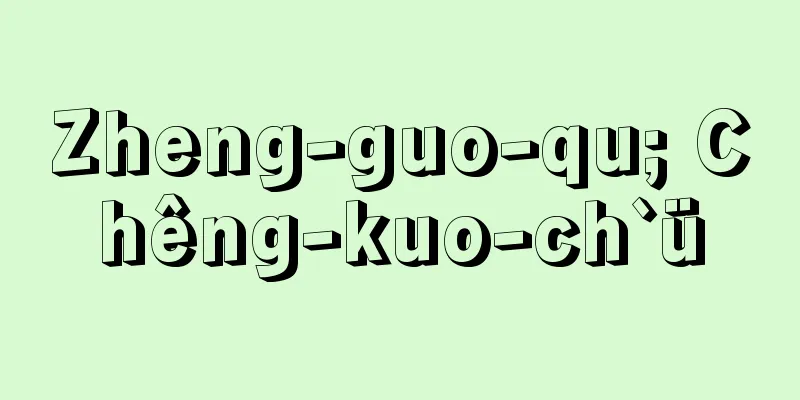Kato Kiyomasa

|
A military commander in the Azuchi-Momoyama period. A daimyo of Higo-Kumamoto who was Hideyoshi's "protégé." Born in Nakamura, Aichi-gun, Owari Province (Nagoya City). His childhood name was Yashamaru, and after coming of age he changed his name to Toranosuke Kiyomasa. He served Toyotomi Hideyoshi from a young age. In 1580 (Tensho 8), he was given 120 koku of land in Jinto-gun, Harima Province (Kanzaki-gun, Hyogo Prefecture), and the following year he participated in the siege of Tottori Castle, the siege of Kanmuriyama Castle in Bitchu Province, and the Battle of Yamazaki. He was particularly active in the Battle of Shizugatake in 1583, and is counted as one of the Seven Spears. Due to his achievements, he was awarded a fief of 3,000 koku in Omi, Yamashiro, Kawachi and other provinces. In 1585, he was appointed as a Junior Fifth Rank and Chief Accountant. In 1587, he served as a reserve officer and guard of Higo Uto Castle during the Kyushu Conquest. His position at this time was apparently related to the military provisions department. He also served as a magistrate in the Sakai area of Izumi Province (Osaka Prefecture). Around this time, due to his mother's teachings, he became a stronger believer in Nichiren Buddhism. In 1588, he succeeded Sassa Narimasa as lord of the northeastern half of Higo (including Ashikita County) and lord of Kumamoto Castle. His fief was worth approximately 195,000 koku. He also served as the magistrate of Toyogura Kurai-ri-chi in Higo. During the Bunroku Invasion, he led the second army and was feared as a demon general. In July 1592 (1st year of Bunroku), he captured two Korean princes, Imkai-kun and Junhwa-kun, in Kainei (North Korea), and further advanced his troops to Oranka (present-day Russian territory). His famous episode of hunting a tiger with a katakamayari spear made him famous as a military commander, but it was created in the mid-Edo period. During the war, he insisted on territorial cession, but was gradually isolated by the peace faction of Ishida Mitsunari, Konishi Yukinaga, and others, and was finally falsely accused in 1596 (Keicho 1) and ordered to live in seclusion in Fushimi. During this period of seclusion, a major earthquake occurred in Gyeonggi, and there is a story that Kato was released from house arrest because he went to the castle out of concern for Hideyoshi's safety, but the truth of why he was lifted from house arrest is unknown. Around this time, he was planning trade with Luzon (the Philippines), and was also a man of great financial ability. He returned to fight in the Keicho War, but struggled at Ulsan Castle, narrowly escaping death and returning home. In the Battle of Sekigahara, he became the center of the Eastern Army in Kyushu. After the war, he became the lord of the entire Higo province (excluding Amakusa and Kuma) (540,000 koku, including part of Bungo province). From this time, he promoted the construction of rivers and new rice fields within his territory, laying the foundations for today's Higo Plain. He also built the magnificent and sturdy Kumamoto Castle (construction is said to have begun in 1600, 1601, or 1603), and formed a castle town, which became the basis of today's Kumamoto City. One of his policies within his territory was the suppression of Christianity early on, and he worked to promote the Nichiren sect. In March 1603 (Keicho 8), he was appointed Higo no Kami with the rank of Junior Fourth Rank. He then played an active role in the construction of Edo Castle and Nagoya Castle. In 1618, he persuaded Toyotomi Hideyori to meet with Tokugawa Ieyasu at Nijo Castle, and planned a peace plan. On the way back, he fell ill on the ship. Later, legend has it that he was poisoned by being forced to eat poisonous buns at this meeting, but this is incorrect; he actually died of a cerebral hemorrhage. In his later years, he used the seal "Rido Ouken" and devoted himself to literature and the tea ceremony. He died on June 24, 1600, at the age of 50. His main mausoleum is located in Honmyo-ji Temple, Nishi-ku, Kumamoto City. Later, during the time of his son Kato Tadahiro, he was exiled to Shonai (Yamagata Prefecture) in 1632 (Kan'ei 9) due to family disputes and poor management of his domain's policies, and the Kato clan came to an end. [Tsuneo Moriyama] "The Life of Kato Kiyomasa" by Nakano Kataro (1909, Ryubunkan / reprinted in 1979, Seichosha) "Portrait of Kato Kiyomasa" Partial replica owned by the Historiographical Institute, University of Tokyo © Historiographical Institute, University of Tokyo "> Kato Kiyomasa Jyochi Shrine worship hall. Kumamoto City, Kumamoto Prefecture © Kumamoto Prefecture "> Honmyoji Temple Source: Shogakukan Encyclopedia Nipponica About Encyclopedia Nipponica Information | Legend |
|
安土(あづち)桃山時代の武将。秀吉「子飼い」の肥後熊本の大名。尾張(おわり)国愛智(えち)郡中村(名古屋市)の生まれ。幼名夜叉丸(やしゃまる)、元服後は虎之助(とらのすけ)清正と改名。幼少時より豊臣(とよとみ)秀吉に仕える。1580年(天正8)播磨(はりま)国神東(じんとう)郡(兵庫県神崎郡)120石を給せられ、翌年の鳥取城攻め、備中(びっちゅう)国冠山(かんむりやま)城攻め、山崎の戦いに参加。とくに1583年の賤ヶ岳(しずがたけ)の戦いで活躍し、七本槍(やり)の一人に数えられる。その功績により近江(おうみ)・山城(やましろ)・河内(かわち)国など3000石の知行(ちぎょう)を得る。1585年従五位下(じゅごいのげ)主計頭(かずえのかみ)に叙任。1587年の九州征伐には後備、肥後宇土(ひごうと)城番を勤める。このころの役職は兵粮方(ひょうろうかた)に関係していたらしい。また和泉(いずみ)国(大阪府)堺(さかい)周辺の代官を兼務。このころから母の教化で日蓮(にちれん)宗の信仰が強くなる。1588年佐々成政(さっさなりまさ)の後を受け、肥後北東部半国(芦北(あしきた)郡を含む)の領主となり隈本(くまもと)(熊本)城主。領地高約19万5000石。肥後の豊臣蔵入地(くらいりち)の代官も兼務。文禄(ぶんろく)の役には第二軍を率いて出兵し、鬼将軍と恐れられ、1592年(文禄1)7月には朝鮮の2王子臨海君(りんかいくん)、順和君(じゅんなくん)を会寧(かいねい)(北朝鮮)で捕らえ、さらに兀良哈(オランカ)(現ロシア領)にまで兵を進む。片鎌槍(かたかまやり)での虎狩りは有名なエピソードで、武将の名を高めているが、江戸中期につくられたもの。戦役では領土割譲を主張し、しだいに石田三成(いしだみつなり)、小西行長(こにしゆきなが)らの講和派のために孤立化し、ついに1596年(慶長1)讒訴(ざんそ)され、伏見(ふしみ)に蟄居(ちっきょ)を命ぜられる。この蟄居期間中に京畿(けいき)で大地震があり、秀吉の身を案じて登城したので謹慎が解けたという、「地震加藤」の物語があるが、謹慎解除の真相は不明。このころ呂宋(ルソン)(フィリピン)貿易を計画しているし、理財にも秀でた人物である。慶長(けいちょう)の役に再出兵したが、蔚山(うるさん)城にて苦戦し、九死に一生を得て帰国。関ヶ原の戦いでは九州における東軍の中心となる。戦後に肥後一国(天草・球磨(くま)を除く)領主(54万石、豊後(ぶんご)国の一部を含む)となる。このころから領内の川普請(かわぶしん)、新田開発を進め、今日の肥後平野の基礎をつくる。また壮大堅牢(けんろう)な名城熊本城を築城(慶長3、4、6年着工説がある)し、城下町を形成し、今日の熊本市の母胎となる。領内政策の一つにキリスト教の弾圧を早くから行い、日蓮宗の興隆に努めた。1603年(慶長8)3月、従四位下(じゅしいのげ)肥後守(ひごのかみ)に叙任。その後江戸城、名古屋城の普請工事に活躍。11年豊臣秀頼(ひでより)を説得し、徳川家康と二条城で会見させ、和平策を企図する。その帰途、船中にて発病。後世、この会見で毒饅頭(どくまんじゅう)を食わされて毒殺されたと伝説化されているが誤りで、彼の死因は脳溢血(のういっけつ)による。晩年は「履道応乾(りどうおうけん)」の印章を使用し、文芸・茶道にも努める。慶長(けいちょう)16年6月24日、50歳で死亡。本廟(ほんびょう)が熊本市西区本妙寺にある。のち子加藤忠広のとき御家騒動や領内政策などの不手際で、1632年(寛永9)庄内(しょうない)(山形県)に配流(はいる)され、加藤氏断絶となる。 [森山恒雄] 『中野嘉太郎著『加藤清正伝』(1909・隆文館/復刊・1979・青潮社)』 「加藤清正画像」 東京大学史料編纂所所蔵模写(部分)©東京大学史料編纂所"> 加藤清正 浄池廟拝殿。熊本県熊本市©熊本県"> 本妙寺 出典 小学館 日本大百科全書(ニッポニカ)日本大百科全書(ニッポニカ)について 情報 | 凡例 |
<<: Caduceus (English spelling) caduceus [Latin]
Recommend
Tillandsia cyanea (English spelling) Tillandsiacyanea
… [Takabayashi Masatoshi]. … *Some of the termino...
Nummulites (English spelling)
A genus of large foraminifera that appeared in the...
Cubitt
A unit of length used in ancient Egypt, Mesopotami...
fig bird
...Their bills are slightly larger and curved tha...
René Daumal
1908‐44 French poet and writer. Born in the Ardenn...
Downward Rigid Prices - Downward Rigid Prices
...When these conditions are not met (competition...
orographic snowline
The average snowline of a glacier in a given regi...
Protomyces lactucae (English name)
…[Tsubaki Keisuke]. . . *Some of the terminology ...
Tomojiro Ikeuchi - Tomojiro Ikeuchi
1906-1991 A composer from the Showa period. Born ...
aldose
...A general term for polyhydric alcohols with al...
Shouni Kagesuke
Year of death: 1285 Year of birth: 1246 A military...
Tadmar
…The ruins are located about 200 km northeast of ...
Suomenlahti
…Official name: Republic of FinlandSuomen Tasaval...
Polar night vortex
⇒Polar vortex Source: About Shogakukan Digital Dai...
Igatari - Igatari
...The most common form is a role that connects t...









